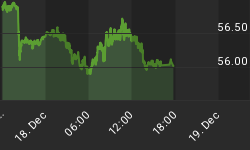If Federal Open Market Committee (FOMC) members were to center their December 07 rate decision around the basis of Treasury Secretary Paulson's continually spouted "Strong Dollar Policy" there is absolutely no way they could make a rate cut, as the dollar is falling off a cliff and its rate of decent is increasing.
So what is happening in the financial realm and why is the dollar falling so fast? Well, a big part of the answer to this question relates directly to debt and the creation of money.
For those of you who don't know, every dollar in circulation today was actually borrowed into existence and was created from nothing. For many years this creation of new money through debt was not a problem. As long as the debt could be adequately serviced and various conduits (banks) were open to/available to take on new debt, the system worked just fine.
Recently however, it has become abundently clear to our Federal Reserve Policy makers that massive US debt loads are proving very difficult to service, while at the same time our banking systems are having problems allowing for the creation of new debt (hence new money). This is all VERY BAD news that could cause a systemic implosion if not dealt with swiftly. Therefore, the Fed is monitoring this crisis closely and is lowering short term borrowing rates while injecting massive amounts of new money (through new bank debt) into the banking systems. This combination of excessive liquidity (monetary injections) and lower rates is causing the value of the dollar to plummet. See video below for a better understanding of this whole debt-to-money process (money as debt)















